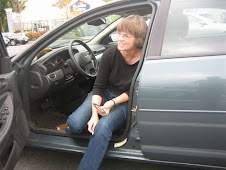Just three years ago, Laura Spinney's Pale Rider: The Spanish Flu of 1918 and How It Changed the World was published. Was it a best seller? Did anyone read the book reviews?
Seems odd to quote the reviewers, but people were warned:
"Spinney's detailed discussions includes the why and how, the human devastation, and the effects on institutions and world affairs. Now nearly 100 years removed from the Spanish flue, Spinney wonders what lessons it has imparted that might help us prepare and deal with the next, inevitable influenza pandemic." Booklist
"Spinney evokes a world that seems farther from us than a mere century, and also uncomfortably close ... if we can;t reconstruct our memories of the Spanish flu quickly enough, millions more will die in the next pandemic." The Tyee
"For all the tragedies and upheavals the book portrays, Pale Rider actually paints an oddly hopeful picture of a populations more sensitized to early warnings and largely more willing to heed them." The National (not)
Spinney notes that a pandemic is a social phenomenon as much as it is a biological one; it cannot be separated from its historic, geographical and cultural context (I would add its economic and political context as well).
Spinney introduces her book with a recap of how viruses move from animal hosts to human; she then points out that historic pandemics, for example, the Plague of Justinian, a pandemic bubonic plague that killed approximately 25 million people in the sixth century AD and led to vast tracts of farmland being abandoned and forests growing back which led to the earth cooling because reforestation captured so much carbon dioxide, the opposite of today's greenhouse effect.
One of the themes she explores is the need of humans to know where the flu came from. Is this an urge to know whom to blame? And today's political sensibilities: not to call it the China flu and China's attempts to prevent the rest of the world to know of its outbreak. Even in 1918, the wondrous WHO issued guidelines stipulating that disease names should not make reference to specific places or people. Glad to know they have a long, long history of political correctness
Other vignettes echo current impressions: A satirical magazine in Brazil expressed fears that the authorities would exaggerate the danger posed to old people to justify a scientific dictatorship violating people's civil rights. She cites football (soccer) being played to empty stands and all night life ceasing.
Another thought provoking insight she has is: "Since disease is broadly defined as the absence of health, whether or not you recognize a set of symptoms as a disease depends on your expectations of health." Align this thought against the evidence of COVID impacting more the "seriously ill with pre-existing conditions and minority communities." What degree of "health" do both populations have?
A mere 76 pages into her book, Spinney recounts how people suspected that the Spanish flu arose from a secret program of biowarfare conceived by one of the participants in WW1. (How about that lab in Hunan?)
She explains the bell curve of the disease, social distancing, the relative "effectiveness of masks and disinfectants, the notable immunity of school-age children. She cites Alfred Crosby who argued that democracy was unhelpful in a pandemic: the demands of national security, a thriving economy and public health are rarely aligned and elective representative defending the first two undermine the third. She posits that as the media began to censor itself (or display bias) compliance drops off even further.
By chapter 14, Spinney had reprised all the H1N1 strains and mutations, called the next pandemic inevitable and concluded that "since the method of virus reconstruction in on the Net, its production by rogue scientists is a real possibility.
And there are post-flu effects: chronic fatigue syndrome, possible famine, painful readjustment, demoralization, and lawlessness. On the other side of the coin, she points out that the higher the death rate, the higher the growth in per capita income in the 1920s that was not new wealth but the indication of society's capacity to bounce back after a violent shock. The Spanish flu influenced art, literature and politics.
Her final section cites the US National Academy of Medicine that estimated there to be a 20% chance of four or more pandemics over the net 100 years. "The only questions are when, how big, and what can we do to prepare ourselves?" She cites unusual external factors to consider in predicting events: El Nino, bird migrations, burning fossil fuels, Her quote should be the basis of fall politics: "Experience has shown that people have a low tolerance for mandatory health measures, and that such measures are most effective when they are voluntary, when they respect and depend on individual choice, and when the avoid the use of police powers." Let that be an opening premise on the upcoming debates.
She also reminds us that the ones who bore the brunt of the Spanish flu were those living in ghettoes or at the rim and such victims find a way to express themselves in strikes, protest and revolution.



No comments:
Post a Comment